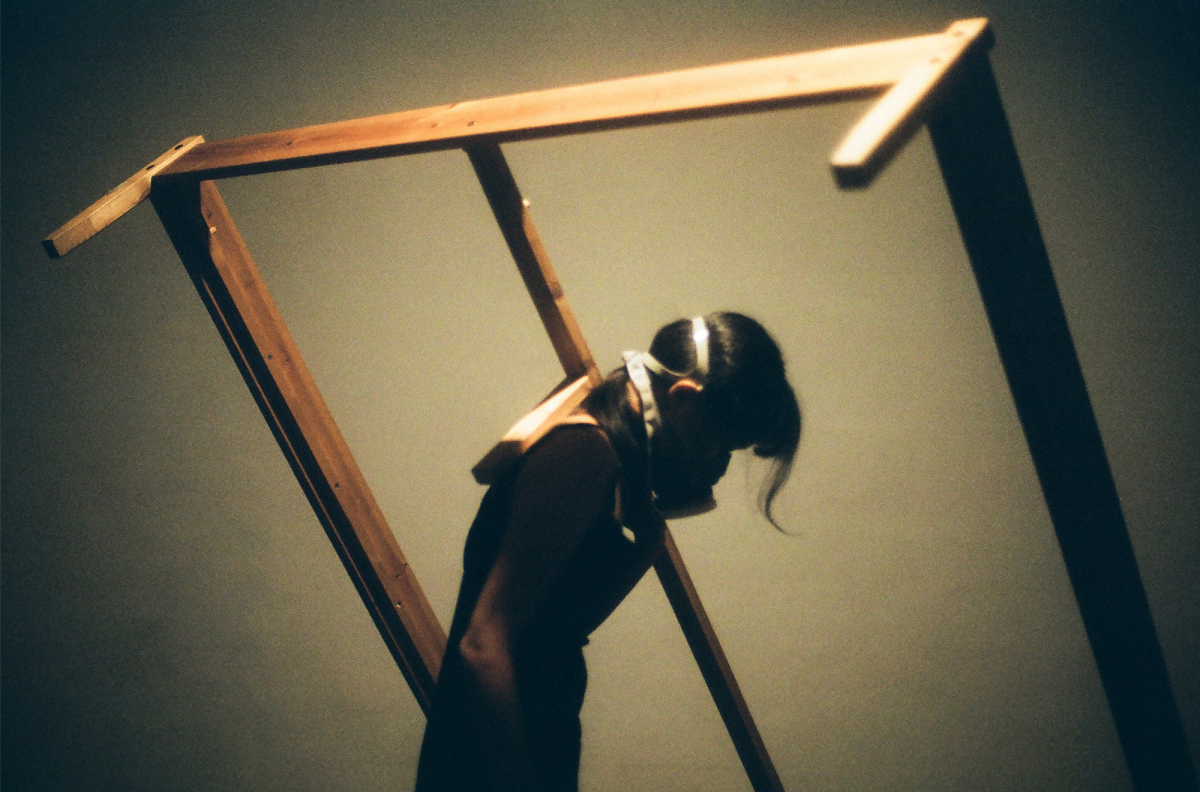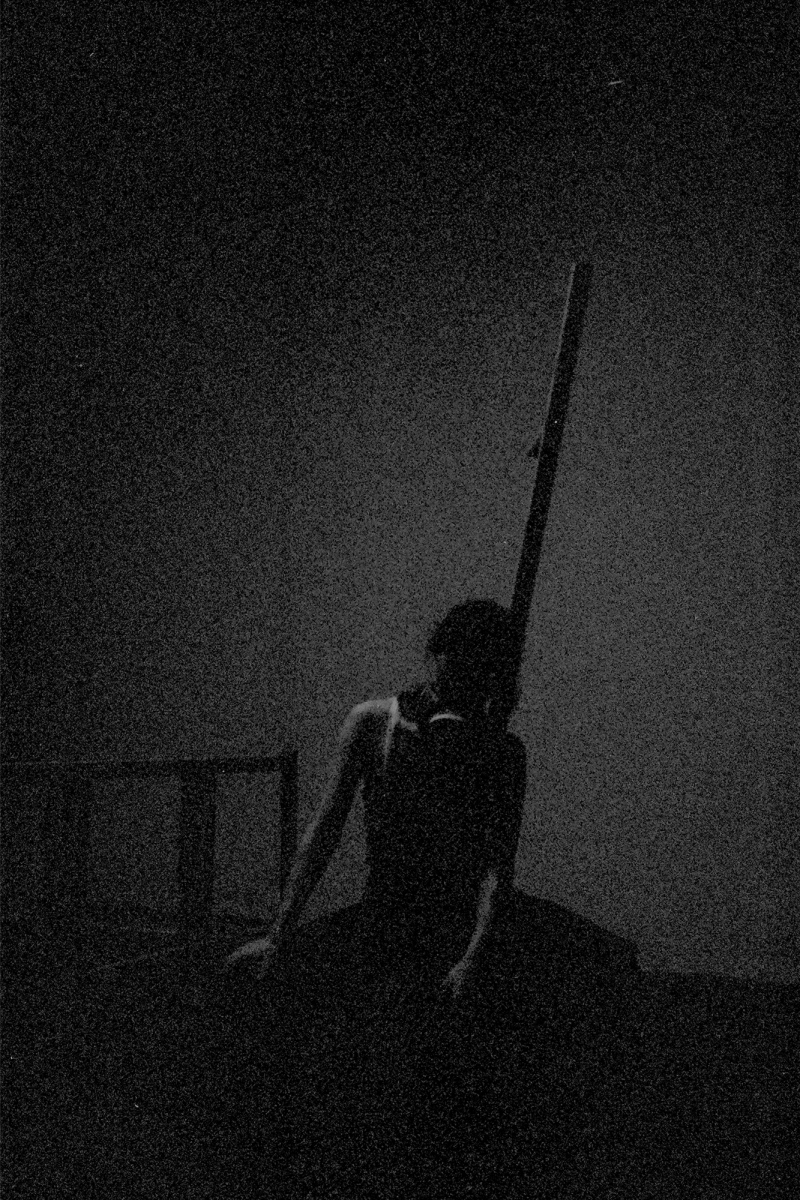-
TRUNK (潛/意識), 2020
Performance (Duration: 6 hours)
As part of Post-Human Narratives series, Curated by Kobe Ko
Hidden Space, Wah Tat Industrial Centre, Kwai Hing, Hong KongA mainstream European furniture company was found to be buying wood illegally logged from an ancient Ukrainian forest, very close to the site of the Chornobyl nuclear disaster. Wooden furniture built by this company and sold around Europe is not only illegally sourced but potentially radioactive.
The film Stalker, by Russian director Andrei Tarkovsky, was released in 1979, seven years before the Chornobyl disaster in 1986. Stalker’s themes and imagery matched so eerily well with Chornobyl that some read it as Tarkovsky predicting the disaster, which in turn preceded the fall of the Soviet Union - Ukraine became independent from the Soviet Union in 1991.
Inspired by these two entwined elements, variations in the rhythms of human emotions are explored, manifested through a juxtaposition of times: the sudden ‘stop of time’ coming from the instant shock and emptiness one experiences when reading about the scandal of the furniture company, comparing with the continuous, repetitive, rhythmical camera movement and head movements of the actors in the film, a mythical, unending, indeterminate time. This work explores the causal relationship and connection between an artistic production and reality, how it affects the rhythm of human emotions and how this might feed into a change in reality.
A video is presented in a split screen: the lower part shows the scene from Stalker where the three main characters are travelling on a trolley towards the forbidden Zone that everyone “fears like plague”. However, their goal there is a room that grants the deepest desires of anyone who enters it. On the upper half of the screen, a remake of the same scene plays, this one shot in Hong Kong, imitating the composition and head movements of the original. These scenes happen within the non-space of transition: the body is on the move through time, whereas emotions are being processed within the person’s body in a different time and space frame. The video is contained within the structure of a wooden bed frame, referencing the scandal and acting as a physical container of the metaphysical and emotional effects of such happenings, that reverberate for generations. Combining with live improvised actions, the performance installation will transform continuously throughout the duration of the exhibition.一家歐洲著名的家具公司被揭發非法採購來自俄羅斯古老森林的木材,這座森林非常靠近切爾諾貝爾(Chornobyl)核事故的所在地。 該公司製造並銷往歐洲各地的木製家具可能受到核輻射污染。
前蘇聯導演安德烈·塔可夫斯基的電影《潛行者》(Stalker)於1979年上映,而在七年後(即1986年)發生了切爾諾貝爾核事故。《潛行者》的主題與情節與切爾諾貝爾事件異常相似,甚至有說法認為塔可夫斯基預言了核災難的發生,以及其後的蘇聯解體。
因受以上事件啟發,而把「在得知家具公司醜聞時所帶來的震驚和空虛而導致的時間暫停」以及「電影中連續、重複、有節奏的運鏡和演員的頭部動作」的兩種時空並置對比,試圖透過並置的「時間」探索人類情感節奏的變化。此作品探討了藝術創作與真實之間的因果關係和關聯,其如何影響人類的情感節奏, 甚至令現實產生變化。
錄像以分屏形式展示:在屏幕下部播放的片段節錄自《潛行者》,三位主角坐在礦車上,駛向禁止區域「Zone」,這個「每個人都像瘟疫一般害怕」的地方內有一個房間,可以讓任何進入它的人實現最深刻的願望。而在屏幕上部,放映著在香港製作的翻拍片段,模仿了電影中的分鏡及演員的所有頭部動作。這些場景全都發生在非空間性過渡的時刻:身體隨時間移動,而人的情感卻存在於與肉體不同的時空框架中,正在或等待處理。作為裝置作品的一部份,錄像屏幕包含在木製家具的結構之中,隱晦地影射醜聞,同時成為此事件在形而上學和情感影響的物理容器。結合現場的即興行為,此行為裝置作品將在整個展覽期間不斷演變。
Further reading 延伸閱讀:
- 種子 | 後人類敘事:藝術家手帳 Post-Human Narratives: Artist Diary
- 讀書報告 "Caputi, Jane. Gossips, Gorgons & Crones: The Fates of the Earth. Vermont: Bear & Company, 1993." | 後人類敘事 Post-Human Narratives: Booklist
Photo by (by order of photo):
Leung Tsz Shan, Claudia
Sabrina Poon
Live streaming on 11th Oct 2020, 13:00-19:00

